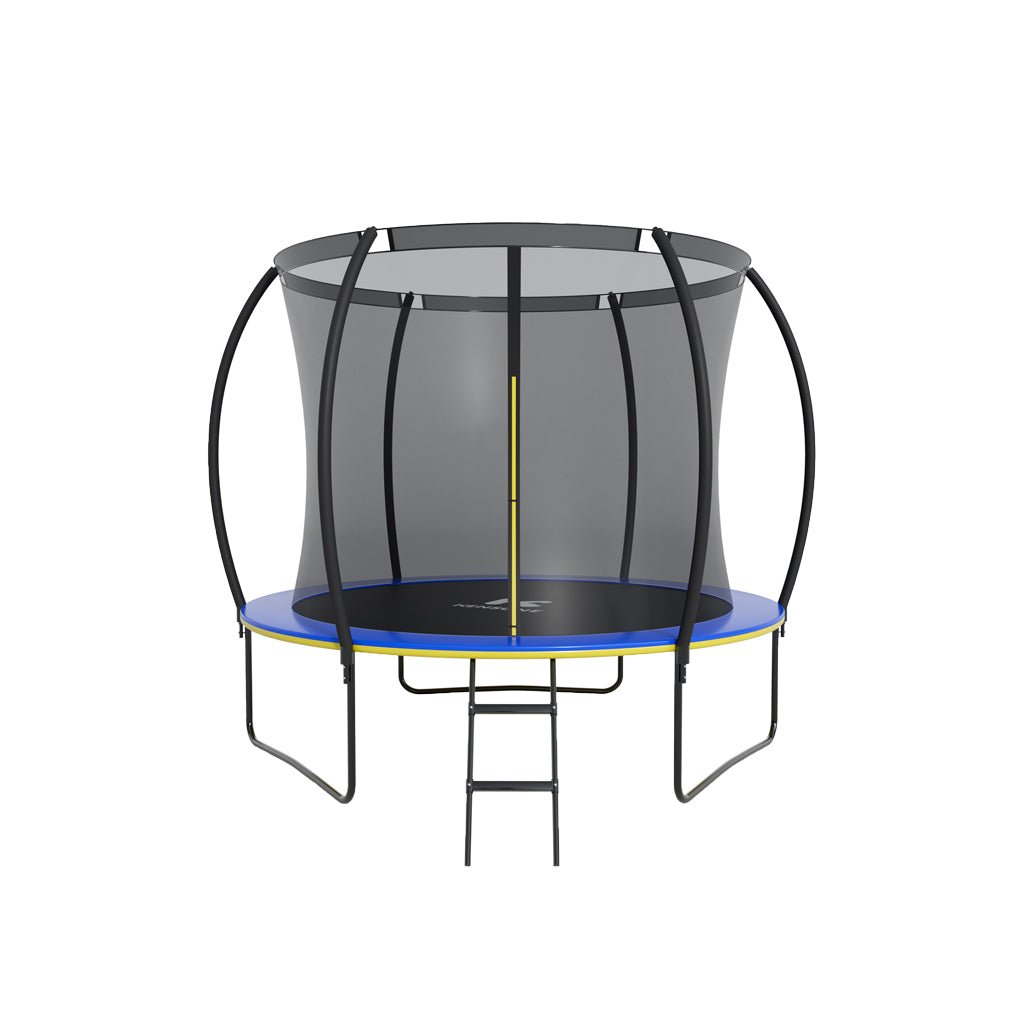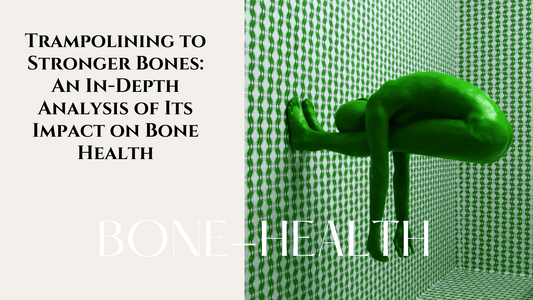Trampoline Gains: Enhancing Balance in Intellectually Disabled Kids

Introduction
Trampolines, often associated with joyful childhood play, are emerging as a promising tool for enhancing the well-being of children with intellectual disabilities (ID). This paper delves into a groundbreaking study that explores how trampoline exercises can significantly improve motor performance and balance abilities in these children. Intellectual disabilities can often lead to challenges in motor skills development, making it crucial to find effective and engaging ways to support these young individuals. The study, rooted in rigorous scientific inquiry, offers new insights into how the simple act of jumping on a trampoline can unlock potential and bring positive changes to the lives of children with ID.
Methods
Participants
The study embarked on a journey with a group of children diagnosed with intellectual disabilities, carefully chosen to partake in this innovative research. These young participants were thoughtfully divided into two groups: one for the trampoline exercise intervention (the experimental group) and the other for comparison (the control group). The selection was meticulous, ensuring that each child met specific criteria that aligned with the study's objectives. The characteristics of these participants, such as age, gender, and severity of intellectual disability, were carefully recorded to ensure a thorough and fair analysis of the trampoline exercise's impact.
Testing Procedures and Instrumentation
A comprehensive testing regimen was designed to accurately measure the effects of the trampoline exercises. This included a series of physical fitness tests, such as the standing long jump, vertical jump, and sit-and-reach test, to gauge the overall physical abilities of the children before and after the intervention. Additionally, the study employed specialized balance tests, tailored to assess the unique needs of children with intellectual disabilities. These tests were complemented by a well-structured trampoline training program, which was both safe and suitable for the participants, ensuring that the exercise was beneficial and enjoyable for the children involved.
Results
Physical Fitness Tests
The study's data vividly demonstrate the significant positive impact of a trampoline exercise intervention on children with intellectual disabilities in the experimental group.
- Vertical Jump: In the experimental group, there was a significant increase in the average vertical jump height, from 12.89±6.25 cm to 19.11±6.45 cm, indicating a marked improvement in lower body strength. In contrast, the control group showed a minimal increase, from 13.67±4.85 cm to 14.11±4.34 cm.

- Broad Jump: The experimental group also displayed considerable improvement in the broad jump, with their average distance increasing from 73.33±30.84 cm to 103.44±32.94 cm. This was in stark contrast to the control group, which exhibited a minor increase from 73.67±19.64 cm to 74.22±18.47 cm.

- Sit and Reach Flexibility, as measured by the sit and reach test, improved from -13.11±7.27 cm to -7.00±6.52 cm in the experimental group. The control group, however, showed little change, moving from -14.78±5.76 cm to -14.56±5.48 cm.

Balance Tasks
- Double Leg Stance with Opened Eyes: The experimental group showed a notable reduction in the Peak-to-Peak Amplitude (CoPmax) in both the mediolateral (M/L) direction (from 13.58±10.72 mm to 5.72±5.71 mm) and the anterior-posterior (A/P) direction (from 21.72±10.15 mm to 12.79±10.69 mm), indicating improved stability. The control group exhibited negligible changes.

- Double Leg Stance with Closed Eyes: In this more challenging balance task, the experimental group's performance in the CoPmax-M/L decreased from 11.87±9.42 mm to 7.79±7.00 mm, and in the CoPmax-A/P from 21.75±10.94 mm to 13.38±7.74 mm, showcasing enhanced balance abilities under more demanding conditions.

- One Leg Stance: The experimental group demonstrated a substantial improvement in the One Leg Stance, with CoPmax-M/L reducing from 16.34±6.35 mm to 11.01±6.10 mm and CoPmax-A/P from 31.83±9.56 mm to 23.78±9.44 mm, signifying a significant enhancement in balancing on one leg. The control group's measurements remained largely consistent.

Discussion
The results of this study provide compelling evidence of the benefits of trampoline exercises for children with intellectual disabilities. The marked improvements observed in both physical fitness and balance tasks underscore the potential of this intervention as a significant tool for enhancing motor skills in this population.
- Impact on Physical Fitness: The significant increases in vertical and broad jump measurements indicate a remarkable enhancement in lower body strength and overall physical fitness. These improvements are critical as they contribute to better mobility and physical independence, which are vital for the overall quality of life in children with intellectual disabilities.
- Improvements in Balance: The notable advancements in balance, as evidenced by the reduced CoPmax and CoPsd values in various stance tasks, highlight the effectiveness of trampoline exercises in developing core stability and coordination. These skills are fundamental for everyday activities and can greatly aid in reducing the risk of falls and injuries.
- Comparison with Previous Research: This study aligns with previous research that has advocated physical activities, including balance and coordination exercises, as beneficial for children with intellectual disabilities. However, it uniquely emphasizes the role of trampoline exercises, which are not only effective but also engaging and enjoyable for children.
- Limitations and Future Research: While the study presents promising results, it is important to note its limitations, such as the small sample size and the short duration of the intervention. Future research should consider longer study periods, larger sample sizes, and potentially the inclusion of other forms of exercise for comparison.
- Conclusion: The study concludes that trampoline exercise is an effective, enjoyable, and feasible way to improve motor performance and balance in children with intellectual disabilities. It opens a new avenue for interventions that are both beneficial and enjoyable for this population.
FAQs
Q1: What are the main benefits of trampoline exercises for children with intellectual disabilities?
A1: Trampoline exercises significantly improve physical fitness, particularly lower body strength and flexibility, and enhance balance abilities. These improvements are crucial for mobility, physical independence, and reducing the risk of falls and injuries.
Q2: How did trampoline exercises impact the balance abilities of children in the study?
A2: The study found that trampoline exercises led to a notable reduction in the Peak-to-Peak Amplitude (CoPmax) and the standard deviation of the CoP (CoPsd) in balance tasks. This indicates improved stability and coordination, which are essential for daily activities.
Q3: Were there any significant differences in the results between the experimental and control groups?
A3: Yes, the experimental group, which participated in the trampoline exercises, showed significant improvements in both physical fitness tests and balance tasks. In contrast, the control group, which did not participate in the exercises, showed minimal or no improvements.
Q4: What limitations of the study should be considered when interpreting the results?
A4: The study had limitations like a small sample size and a short duration of the intervention. These factors should be considered when interpreting the results, and future research with larger sample sizes and longer study periods is recommended.
Q5: Can trampoline exercises be safely included in regular physical activity programs for children with intellectual disabilities?
A5: Yes, trampoline exercises can be safely included as they are not only effective but also engaging and enjoyable. However, supervision and safety measures are important to ensure a safe and beneficial experience for the children.













